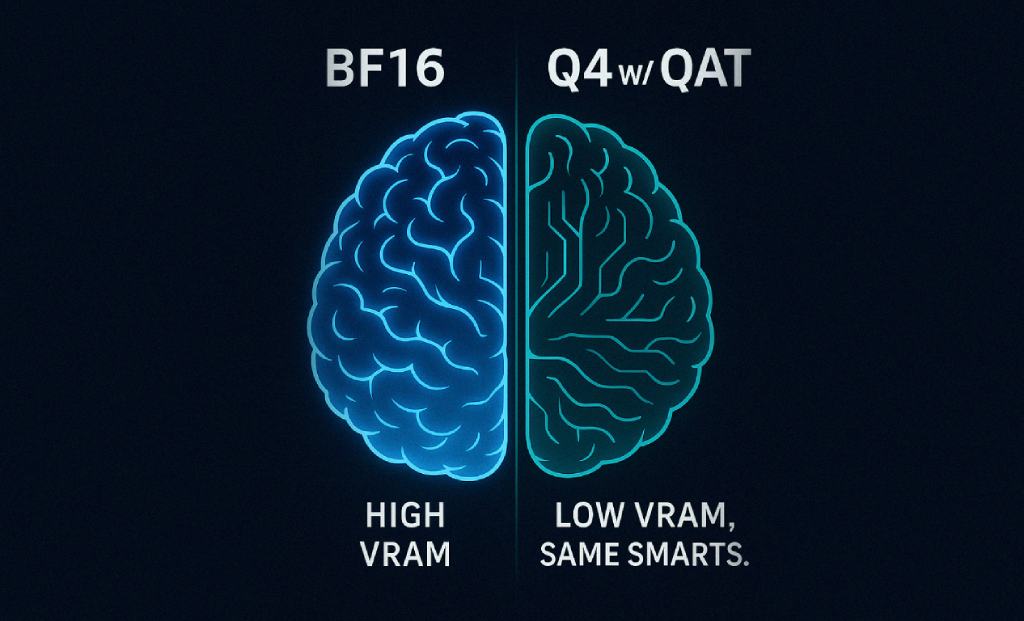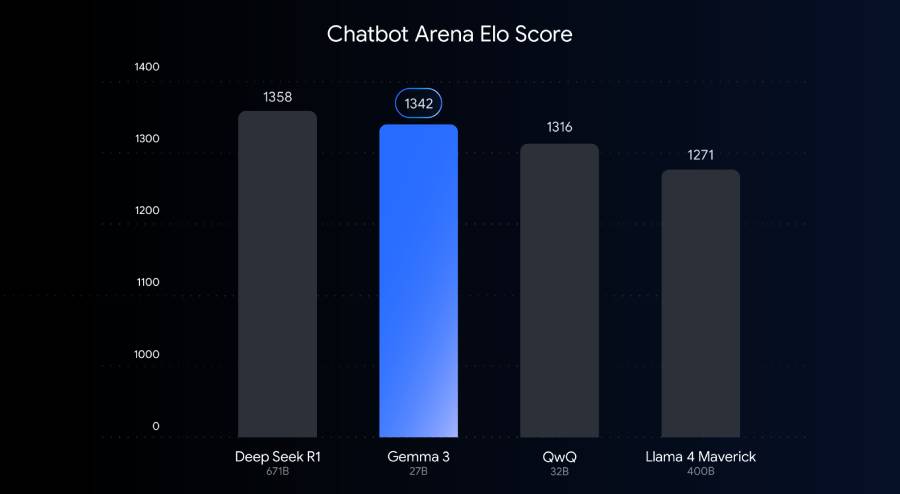Smarter Local LLMs, Lower VRAM Costs – All Without Sacrificing Quality, Thanks to Google’s New QAT Optimization

Google has introduced a breakthrough optimization technique called Quantization-Aware Training (QAT) for their Gemma 3 large language models, dramatically reducing the memory requirements needed to run these powerful AI systems on consumer hardware while preserving model quality.
What is Quantization-Aware Training?
Quantization-Aware Training represents a significant advance in how models are prepared for lower-precision deployment. Unlike traditional quantization, which simply converts a fully-trained model to lower precision after training is complete, QAT integrates the quantization process into the training pipeline itself.
“QAT incorporates the quantization process during training,” Google explains in their developer blog. “QAT simulates low-precision operations during training to allow quantization with less degradation afterwards for smaller, faster models while maintaining accuracy.”
This is a critical distinction from standard quantization methods. In traditional workflows, the model is typically trained in full precision first, then quantized afterward – often resulting in performance degradation. In contrast, Quantization-Aware Training changes the order: the model is trained with quantization in mind from the start.
The process looks like this:
Pretrain → QAT → Quantize → Final Quantized ModelIn other words, QAT doesn’t train a model after quantization; instead, it trains a model to be more resilient to quantization before the actual precision reduction occurs. The model “learns” how to maintain its performance even when operating with fewer bits per parameter.
Google’s 4-bit QAT-quantized Gemma 3 models (GGUF) are already available to download on Hugging Face, and you can load them today using LM Studio and Ollama.
QAT vs Standard Quantization
It’s important to clarify that QAT does not provide any additional memory reduction compared to traditional quantization methods. The VRAM footprint of a QAT model and a standard quantized model with the same bit-depth are virtually identical. For example, both the QAT and non-QAT versions of Gemma 3 27B in Q4_0 format consume approximately 15.6GB of VRAM for model weights.
What makes QAT significant is not memory reduction beyond standard quantization, but rather quality preservation during quantization. Google’s Gemma 3 27B model requires approximately 54GB of VRAM in full precision (BF16), and both standard and QAT quantization methods reduce this to around 15.6GB when converted to 4-bit precision. The difference lies in how well the model maintains its capabilities after this reduction.
Performance Preservation
What makes QAT particularly impressive is its ability to maintain model quality despite the dramatic reduction in precision. According to Google, they’ve “reduced the perplexity drop by 54% (using llama.cpp perplexity evaluation) when quantizing down to Q4_0.”
Independent verification from the community supports these claims. Reddit user VoidAlchemy conducted perplexity tests comparing the original BF16 model with the QAT version:
- Original BF16: PPL = 8.4276
- QAT BF16 (unquantized): PPL = 8.2021
- QAT Q4_0: PPL = 8.2500
Remarkably, the QAT BF16 model actually achieved better perplexity scores than the original model, and the quantized Q4_0 version maintained nearly identical performance to its unquantized counterpart.
Broad Deployment Options
Google has made their QAT models widely available through several popular platforms for running LLMs locally:
- Ollama: All Gemma 3 QAT models are natively supported with simple commands
- LM Studio: Easy desktop interface for downloading and running the models
- MLX: Optimized for Apple Silicon devices
- llama.cpp: Support for GGUF-formatted QAT models in this popular inference engine
- Gemma.cpp: Dedicated C++ implementation for CPU inference
The company has released both pre-quantized models and unquantized QAT checkpoints, allowing developers to create custom quantizations for specific hardware targets.
Looking Ahead
This development could significantly impact the economics of AI deployment, particularly as more companies adopt QAT techniques for their own models. Rather than requiring specialized hardware or cloud services, more powerful AI systems could run efficiently on widely available consumer hardware.
While currently only Google’s Gemma 3 models have been optimized with QAT, the community is already exploring applications to other model families. The release of unquantized QAT checkpoints allows for further experimentation, with early tests suggesting that even 3-bit quantization might be viable while maintaining acceptable quality.





